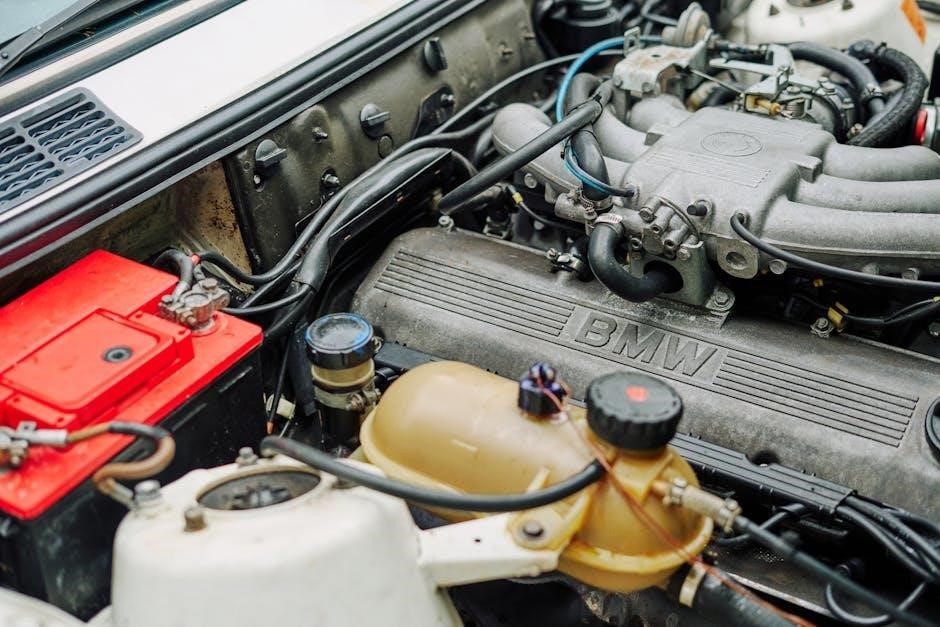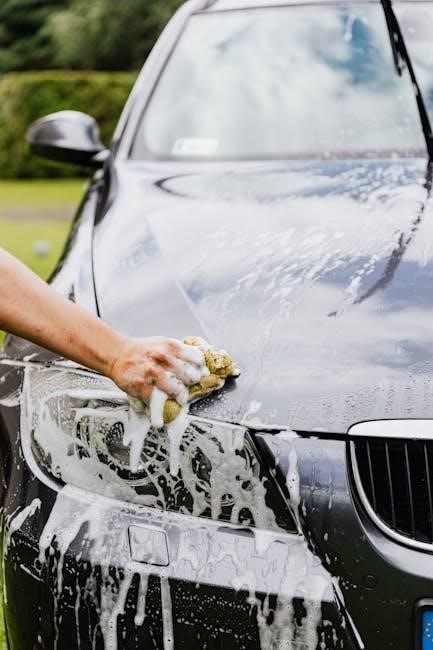The full auto modification manual provides instructions for converting semi-auto firearms to full auto, including fundamentals and key components, using
- step-by-step
guides and illustrations for a successful conversion process always.
Overview of Full Auto Conversion
The full auto modification manual offers a comprehensive overview of the conversion process, including the necessary steps and components required to modify a semi-auto firearm to full auto. This process involves altering the firearm’s mechanism to enable continuous firing, rather than the standard semi-automatic mode. The manual provides detailed instructions and illustrations to guide the user through the conversion process, ensuring a successful and safe modification. The overview section of the manual is crucial in understanding the fundamentals of full auto conversion, including the differences between semi-auto and full auto firearms, and the key components involved in the conversion process. By following the guidelines and instructions outlined in the manual, users can gain a thorough understanding of the full auto conversion process and successfully modify their semi-auto firearms. The manual is an essential resource for those seeking to modify their firearms, providing a clear and concise overview of the conversion process.
Importance of Legality in Full Auto Conversion
The full auto modification manual emphasizes the importance of legality in the conversion process, as modifying a semi-auto firearm to full auto without proper authorization is illegal. The manual stresses that users must comply with all applicable laws and regulations, including obtaining the necessary licenses and permits. This section of the manual provides an overview of the legal requirements and regulations surrounding full auto conversion, including the National Firearms Act and other relevant laws. The manual also discusses the consequences of illegal conversion, including fines and imprisonment. By understanding the legal aspects of full auto conversion, users can ensure that they are in compliance with all applicable laws and regulations, and avoid any potential legal issues. The manual provides a clear and concise explanation of the legal requirements, making it an essential resource for those seeking to modify their firearms. Legal considerations are a critical aspect of the conversion process.

History of Full Auto Firearms
Historical development of full auto firearms began with early
- machine guns
and evolved over time with various innovations and designs always.
National Firearms Act of 1934
The National Firearms Act of 1934 was a significant piece of legislation that impacted the ownership and use of full auto firearms in the United States. This act required individuals to register their full auto firearms with the government and pay a $200 tax, which is equivalent to approximately $4,000 today. The act was enacted in response to the widespread use of full auto firearms by organized crime syndicates during the Prohibition era. As a result of this act, the ownership of full auto firearms became heavily regulated and restricted. The act also led to the development of new technologies and innovations in the field of firearms, including the creation of semi-auto firearms that could be converted to full auto. The National Firearms Act of 1934 has had a lasting impact on the firearms industry and continues to shape the laws and regulations surrounding full auto modification today.
Impact of the National Firearms Act on Full Auto Ownership
The National Firearms Act had a significant impact on full auto ownership, making it more difficult and expensive for individuals to acquire and possess full auto firearms. The act led to a significant decrease in the number of full auto firearms in circulation, as many owners were unable or unwilling to comply with the registration and taxation requirements. As a result, the market for full auto firearms became heavily restricted, and the development of new full auto firearms was greatly hindered. The act also led to the creation of a black market for full auto firearms, where individuals would attempt to acquire and modify semi-auto firearms to convert them to full auto. This has led to a cat-and-mouse game between law enforcement and individuals seeking to circumvent the regulations, with the development of new technologies and methods to detect and prevent illegal full auto modifications. The impact of the act is still felt today, with full auto ownership remaining heavily regulated and restricted.

Converting a Semi-Auto to Full Auto
Modifying semi-auto firearms requires specific
- steps
and components for successful conversion always using proper techniques.
Key Components in Full Auto Conversion
The full auto modification manual outlines the key components necessary for a successful conversion, including the hammer, trigger, bolt, and bolt carrier. These components must be modified or replaced to enable full auto functionality. The manual provides detailed illustrations and instructions for modifying these components, as well as information on the differences between M-16 and AR-15 parts. A thorough understanding of these components and their functions is crucial for a successful conversion. The manual also discusses the importance of proper assembly and installation of these components to ensure reliable and safe operation. By following the instructions and guidelines outlined in the manual, individuals can successfully convert their semi-auto firearms to full auto, using the proper techniques and components. The key components are essential for the conversion process and must be handled with care and attention to detail, using the right tools and materials, and the manual provides a comprehensive guide for this process, including troubleshooting and maintenance tips.
Drop-in Auto Sears and Homemade Auto Sears
The full auto modification manual discusses the use of drop-in auto sears and homemade auto sears in the conversion process. Drop-in auto sears are pre-made components that can be easily installed in a firearm to enable full auto functionality. Homemade auto sears, on the other hand, require machining and fabrication skills to create. The manual provides detailed instructions and diagrams for creating homemade auto sears, including machinist drawings and technical specifications. It also discusses the advantages and disadvantages of using drop-in auto sears versus homemade auto sears, including considerations for reliability, safety, and cost. Additionally, the manual covers the importance of proper installation and testing of auto sears to ensure reliable and safe operation. By following the guidelines outlined in the manual, individuals can successfully install and use auto sears in their full auto conversion projects, using the right tools and techniques, and the manual provides a comprehensive guide for this process. The manual also includes troubleshooting tips for common issues with auto sears.

Legal Considerations for Full Auto Conversion
Full auto conversion is heavily regulated, requiring a
- Class 3
license and strict adherence to federal laws and regulations always.
Class 3 License and Full Auto Conversion
The Class 3 license is a federal license that allows individuals to manufacture, import, and deal in certain firearms, including full auto firearms. To obtain a Class 3 license, individuals must meet specific requirements, such as being at least 21 years old, being a US citizen, and having a clean criminal record. The license also requires a thorough background check and approval from the Bureau of Alcohol, Tobacco, Firearms and Explosives (ATF). With a Class 3 license, individuals can legally convert semi-auto firearms to full auto, but they must still comply with all federal and state laws regulating full auto firearms. The license is typically valid for three years and must be renewed to continue operating. It is essential to note that the Class 3 license is not a permit to own or possess full auto firearms, but rather a license to manufacture, import, and deal in them. The process of obtaining a Class 3 license can be complex and time-consuming, and it is crucial to ensure that all requirements are met to avoid any issues with the law. Additionally, the ATF has strict guidelines and regulations that must be followed when converting semi-auto firearms to full auto, and failure to comply can result in severe penalties. Overall, the Class 3 license is a critical component of full auto conversion, and it is essential to understand the requirements and regulations surrounding it. By following the guidelines and regulations set forth by the ATF, individuals can ensure that they are in compliance with the law and can safely and legally convert semi-auto firearms to full auto. Furthermore, it is crucial to stay up-to-date with any changes to the laws and regulations regarding full auto firearms to avoid any potential issues. The Class 3 license is a valuable tool for those looking to convert semi-auto firearms to full auto, and it is essential to handle it with care and attention to detail. In conclusion, the Class 3 license is a necessary step for full auto conversion, and it is crucial to understand the requirements and regulations surrounding it to ensure compliance with the law.
Strict Regulations on Automatic Firearms
Automatic firearms are heavily regulated due to their potential for misuse or increased risk of accidents. The government has implemented strict laws and regulations to control the ownership and use of these firearms. The National Firearms Act of 1934 requires owners of automatic firearms to register them with the government and pay a tax. Additionally, the Firearm Owners Protection Act of 1986 prohibits the manufacture and importation of new automatic firearms for civilian use. The Bureau of Alcohol, Tobacco, Firearms and Explosives (ATF) is responsible for enforcing these regulations and ensuring that owners of automatic firearms comply with the law. The ATF has established guidelines for the storage, transportation, and use of automatic firearms, and owners must adhere to these guidelines to avoid penalties. The regulations on automatic firearms are complex and subject to change, so it is essential for owners to stay informed and up-to-date on the latest laws and regulations. Overall, the strict regulations on automatic firearms are in place to ensure public safety and prevent the misuse of these powerful weapons. The government takes the regulation of automatic firearms seriously, and owners must be aware of and comply with the laws and regulations governing their use.

Challenges and Controversies in Full Auto Conversion
The process of converting a semi-auto firearm to full auto is fraught with challenges and controversies. One of the main issues is the risk of accidental discharge, which can result in injury or death. Additionally, the conversion process can be complex and require specialized tools and expertise. The use of full auto firearms also raises concerns about public safety and the potential for misuse. Many experts argue that full auto firearms are not necessary for civilian use and that they pose a significant risk to the community. Furthermore, the conversion of semi-auto firearms to full auto can be difficult to detect, which can make it challenging for law enforcement agencies to regulate and track these firearms. The controversy surrounding full auto conversion has led to ongoing debates and discussions about the need for stricter regulations and laws to control the use and ownership of these firearms. The challenges and controversies surrounding full auto conversion highlight the need for caution and careful consideration when dealing with these powerful weapons.

